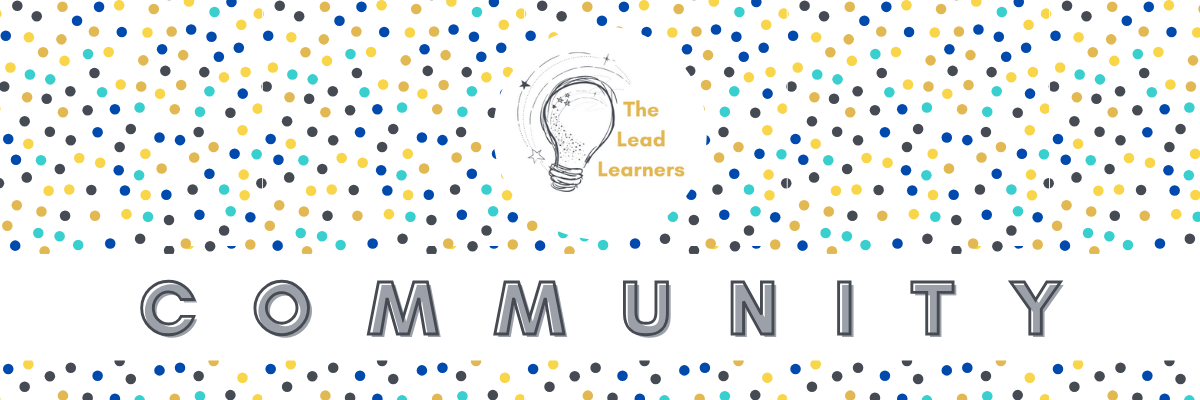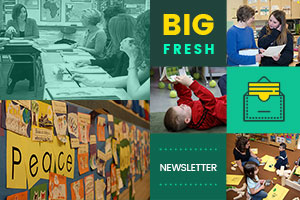We danced starlight into the rainbows of our broken hearts.
—Joseph Coelho
Dance Starlight
Joseph Coelho and 21 artist friends created Ten-Word Tiny Tales of Love. I hope you know this picture book, but if you don’t, I’m a little jealous of you because you’ll get to read it for the first time.
Each spread includes a 10-word tiny tale and then an illustration rendered by a different artist. My soul stumbled when I reached this 10-word tiny tale:
We danced starlight into the rainbows of our broken hearts.
Some things in schools today make me feel heartbroken: children who are hungry, mothers addicted, teens depressed. I feel heartbroken about the pressure to conform to strict curricular demands and the way we often misunderstand the needs of those who are neurodivergent.
I love the image of dancing starlight into the rainbows of our broken hearts. As the starlight pitches through the darkness and hits the cracks in our hearts, rainbows form. This is beautiful.
Each week, Choice Literacy contributors who are just as hopeful and heartbroken as you are share ideas and tips to dance starlight into the rainbows of our broken hearts. You’ll find ways to create beauty in the midst of the heartache as starlight dances in your corner of the world. This week our contributors are extra-vulnerable as they share candid stories from their own schools and urge us to take a wise look at the texts we share with students.
Shine on,
Ruth Ayres
Editor in Chief

Stella Villalba guides us to expand the counter-narrative texts we use in our classrooms. Counter-narrative texts challenge the stereotypes often seen about a group of people, and they celebrate the joy and resilience of a community. Stella provides a list of critical questions that allow us to deeply explore texts, as well as suggestions of books to read.

Connect, collaborate, and grow without leaving your school. Join The Lead Learners (free) Community, designed just for instructional influencers like you.
September’s focus is on the power of connection as the foundation of leadership. By investing in relationships, we create the trust and support that allow real growth to flourish. Inside the community, you’ll find
- Coach-to-Coach: short, live monthly sessions with peers plus recordings if you miss them,
- a curated selection of articles and videos from Choice Literacy,
- prompts and ideas for your professional notebook or journal, and
- easy networking with educators in similar roles.
Join The Lead Learners Community and move from feeling uncertain or isolated to confident, connected, and joyful in your work as a change maker.

New members-only content is added each week to the Choice Literacy website. If you’re not yet a member, click here to explore membership options.
Melissa Quimby advocates for us to become educators who shine light on truthful histories. To do so, we must carefully collect and examine the resources we are using with students.
Gigi McAlister shares a vulnerable story of realizing a read aloud text she used for many years was racist. She urges us to pause and examine the material we are using with students through different lenses to ensure that we are providing positive learning experiences for all students.
VIDEO | Tammy Mulligan uses a digital anchor chart to hold several steps to guide students while reading nonfiction text. Students tape a copy of the printed digital anchor chart into their notebooks so they have easy access to it while reading in the classroom or at home.
Gretchen Schroeder invited her students to write personal essays inspired by the 2022 New York Times series “I Was Wrong About.” Gretchen shared with her students (and now shares with us) the way she was wrong about her mammy collection.

New members-only content is added each week to the Choice Literacy website. If you’re not yet a member, click here to explore membership options.
Heather Fisher is candid about her hesitation in embarking on a new literacy curriculum, as well as her commitment to continue living into her core values. She inspires all of us to lead with integrity by holding on to moments of self-reflection.
Stephanie Affinito reminds us that part of our role as literacy coaches can be modeling how to put our own mental health and wellness first. Reading picture books together is the perfect way to spark a conversation about educators’ self-care and provide a few new read aloud recommendations for the classroom, too. Here are five picture books that share a powerful message related to our own wellness practices.
Matt Renwick shares a wise and helpful response when a teacher is looking for support for using a text with mature content in her classroom. Learn about book rationales, how to find them, and how to create one of your own with ChatGPT. More importantly, consider how to engage in conversations rather than offer blanket mandates about whether a book is allowed in classrooms.
Quote It:
All at once summer collapsed into fall.
—widely attributed to Oscar Wilde
That’s all for this week!



